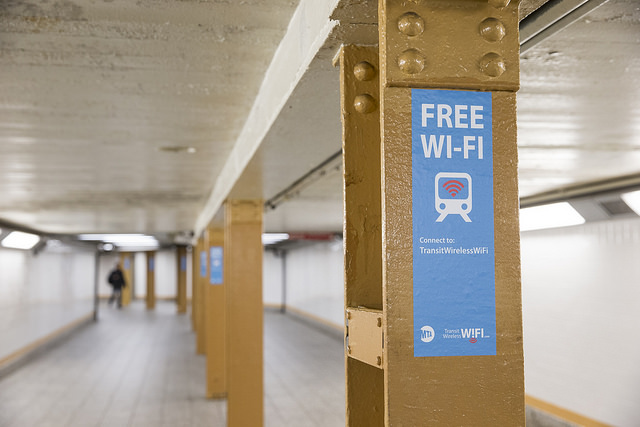So, the MTA is getting an upgrade, and over the next few years we’ll begin to reap the benefits of a modernized, safer, and more technologically advanced commute.
Eventually, busses and trains will be equipped with digital information screens, Wi-Fi hotspots, and USB charging ports. Exciting stuff. Perhaps too exciting?
What we mean is this: in this digital age, moments of respite from being “wired” are few and far between. The only time we’re not on our phones or laptops these days, it seems, is when we are either physically away from them or there’s a glitch in our connectivity. This convergence of reasons why would actually be forced to read a book or interact with other humans without devices between us has been isolated, up until now now, in pockets like the New York City subway system.
We’re certainly not advocating for falling too deeply into those pockets. How many times have we been in a stalled or delayed subway car en route to an appointment (or to pick up our children) with no ability to alert anyone to our tardiness dilemma? Gone soon are the days, also, when using that as an excuse for being incommunicado will fly in the workplace or with the questioning spouse.
But we know all too well that, sometimes, we just want a break from the incessant digital hum, app beeps, and vibrating gadgets. FOMO (fear of missing out) never existed before we were so attached at the hip to our various social media outlets so as to learn about how we were missing out from everyone we’re connected to on social media. So maybe – like days of yesteryear, back when there was dial-up – the internet might just occasionally not be available to us. And that might, at least on those rare occasions, not be a bad thing. Being forced to disconnect underground was a reason, before now, to relax a little.
And now to play devil’s advocate with ourselves. Last year, the New York Daily News did a study on MTA safety covering 48,000 crimes committed at 421 stops over a five-year period, and, close to home, the Breezy Point station ranked in as the most crime-ridden of all.
NYPD statistics indicate that transit crime often occurs when passengers are sleeping, and, according to NYPD Transit Chief Joseph Fox, quoted in a recent AM New York story, people often specifically plan their commutes factoring in naptime. Under a new state law signed by Governor Cuomo, the NYPD will be required to release detailed data on transit crime in an annual report. Fox said the rising crime stats are of little concern. But our question is: were commuters to have greater connectivity during these sleepy spells, would they still opt for the naps? Thus, in addition to the actual security upgrades proposed as part of the Governor’s capital plan (better lighting, communication kiosks, surveillance cameras), there are implied upgrades to security if better connectivity means better vigilance.
So, if being more tuned in will make us safer (if not more tired and FOMO-depressed), we guess we’ll err on the side of caution and stay connected – while our phones are turned on, that is.

